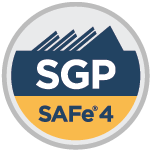
Yes, government agencies can be Lean and Agile
 Five years ago, if I mentioned Lean-Agile transformation to someone from a government agency, I’d get a contemplative look and sometimes a wry smile. Agile was definitely on leaders’ minds but they were skeptical that it could work in a sector that’s hamstrung by regulations and a challenging contracting environment. Fast forward to now and government adoption of Lean and Agile has accelerated to where most programs—80+ percent in the U.S. according to a 2017 Deloitte study*—are self-reporting some form of iterative development. In fact, one agency, the Department of Homeland Security, has changed its governance policy to require Agile as the default lifecycle model for technology programs. If teams want to continue to work via waterfall methods, they need to submit a waiver. Additionally, a recent report from the Defense Science Board (a task force of the Department of Defense) recommends that the military adopt an iterative, Agile approach to acquiring software.
Five years ago, if I mentioned Lean-Agile transformation to someone from a government agency, I’d get a contemplative look and sometimes a wry smile. Agile was definitely on leaders’ minds but they were skeptical that it could work in a sector that’s hamstrung by regulations and a challenging contracting environment. Fast forward to now and government adoption of Lean and Agile has accelerated to where most programs—80+ percent in the U.S. according to a 2017 Deloitte study*—are self-reporting some form of iterative development. In fact, one agency, the Department of Homeland Security, has changed its governance policy to require Agile as the default lifecycle model for technology programs. If teams want to continue to work via waterfall methods, they need to submit a waiver. Additionally, a recent report from the Defense Science Board (a task force of the Department of Defense) recommends that the military adopt an iterative, Agile approach to acquiring software.
As Agile adoption grows within the public sector, we’ve found that people leading these transformations are hungry for guidance. We created our SAFe® for Government course to meet that demand and teach government leaders how to address the most common barriers to SAFe adoption for government programs.
Digital transformation, globalization, citizen expectations for instant access to information and services, shrinking budgets, demands for greater accountability in government spending, increased cyber threats, and antiquated legacy systems are just some big factors driving the need for change in the public sector. While government agencies rely on technology to solve challenges like these, traditional approaches to developing and sustaining new technologies have proven to be inadequate for 21st-century solutions.
At Scaled Agile, we’ve found that the conversation has shifted from “Is Agile possible?” to “How do we make it work in our agency, and how do we scale it?” While this rise in adoption is great, typically only development teams are participating in Lean and Agile practices. There is still much work to do to bring Lean thinking to strategy, alignment, budgeting, project-centric planning, acquisitions, contracting, governance, and compliance.
Our new SAFe® for Government course helps agency leaders understand how to generate better results for stakeholders, including taxpayers, contractors, and military personnel, by following proven, integrated practices and competencies to adopt Lean, Agile, and DevOps. Version 4.6 of the Scaled Agile Framework® (SAFe®) provides specific recommendations that align with the new era of innovation in government—some of which come directly from guidance authored by federal agencies including the U.S. Government Accountability Office, General Services Administration, Office of Management and Budget, and Office of Federal Procurement Policy.
During the two-day course, leaders will gain a foundational understanding of SAFe and learn how to adopt SAFe to help solve the root causes of the challenges government agencies face in delivering technology-based capabilities. Success patterns covered include how to align programs to agency strategy, Lean budgeting, forecasting, estimating, contracting, governance, and compliance. The course also provides guidance in how leaders can lead the transition to SAFe. Additionally, attendees will have the opportunity to become a SAFe for Government Practitioner (SGP) by passing the Certification exam.
Contextualized Lean-Agile and DevOps content and instruction has been missing in the public sector. Through the SAFe® for Government course, we’re excited to help government leaders apply newfound knowledge in Lean-Agile practices to lead successful change.
Find a course near you.
—Steve
Dr. Steve Mayner, SPCT and Senior Consultant
*Source: Deloitte Center for Government Insights, 2017, Feb 2018



Glenn Roman
Can an existing SPC teach the SAFe for Goverment course? Working with a federal agency client now and getting the classic “wont work for us, we are different” pushback.
Steve Mayner
Hi Glenn! Yes an existing SPC can teach SAFe for Government after they complete the corresponding Course Delivery Enablement learning plan on the community site. The course was specifically designed to address that response from government program and agency leaders. There are also a growing number of government case studies that prove it actually does work in government.
Hope that helps!
Steve
Jose Tijam
Hello Dr. Mayner, I enjoyed reading your post. I’m genuinely interested in learning how these agencies are exercising Agile governance.
For instance, since the Department of Homeland Security adopted Agile as the default life-cycle model for technology programs, how are they ensuring all their different teams are leveraging agile properly?
Thank you.
Steve Mayner
Thanks for the positive feedback Jose! Check out the DHS presentation from our recent SAFe Global Summit in this Vimeo album: https://vimeo.com/album/5599043. From my understanding, they have many coaches and change agents (both government and contractor) throughout their many agencies to help with implementations on each program, and their governance office does try to provide high-level guidance and auditing to see if sound practices are being followed. It is a huge government department so it is definitely still a work in progress!
A Chaudhuri
Well written and beautiful article.
Steve Mayner
Thank you for that kind feedback!